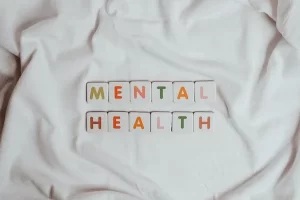 Mental health disorders are pervasive and can significantly impact individuals’ lives, relationships, and overall well-being. Understanding these conditions and their effects is crucial for promoting awareness, reducing stigma, and facilitating timely intervention and support. In this article, we delve into some common mental disorders, shedding light on their nature, prevalence, and impact on individuals and society.
Mental health disorders are pervasive and can significantly impact individuals’ lives, relationships, and overall well-being. Understanding these conditions and their effects is crucial for promoting awareness, reducing stigma, and facilitating timely intervention and support. In this article, we delve into some common mental disorders, shedding light on their nature, prevalence, and impact on individuals and society.
Understanding Common Mental Disorders: Common mental disorders encompass a broad range of conditions that affect mood, thinking, and behavior. Among the most prevalent are anxiety disorders, depression, bipolar disorder, and substance use disorders. Anxiety disorders involve excessive worry or fear, while depression is characterized by persistent sadness, loss of interest, and feelings of worthlessness. Bipolar disorder involves mood swings between depression and periods of elevated mood or mania. Substance use disorders refer to addiction or dependence on substances like alcohol or drugs.
Prevalence and Impact: The prevalence of common mental disorders is substantial, with millions of people worldwide affected by these conditions. Anxiety disorders are among the most prevalent mental health disorders globally, affecting approximately 284 million people. Depression is another leading cause of disability worldwide, with over 264 million individuals affected. Bipolar disorder impacts around 45 million people globally, while substance use disorders affect millions, contributing to significant health, social, and economic burdens.
Impact on Individuals: Common mental disorders can have profound effects on individuals’ daily functioning, quality of life, and overall health. Symptoms such as persistent worry, sadness, or mood swings can interfere with work, school, relationships, and other areas of life. Individuals may experience difficulties concentrating, making decisions, or performing daily tasks, leading to impaired productivity and functioning. Moreover, mental health disorders can increase the risk of physical health problems and contribute to a higher likelihood of engaging in risky behaviors or substance abuse.
Impact on Society: Beyond individual impacts, common mental disorders exert a considerable toll on society as a whole. These conditions are associated with significant healthcare costs, including expenses related to treatment, hospitalization, and lost productivity. Mental health disorders also contribute to a higher risk of unemployment, disability, and reduced life expectancy. Moreover, stigma surrounding mental illness can hinder individuals from seeking help, leading to delayed diagnosis and treatment, further exacerbating the societal burden.
Promoting Awareness and Support: Increasing awareness and understanding of common mental disorders is essential for reducing stigma, promoting early intervention, and improving access to treatment and support services. Education campaigns, community outreach initiatives, and mental health advocacy efforts play a crucial role in raising awareness and promoting mental health literacy. Additionally, providing accessible and culturally competent mental health services, including counseling, therapy, and support groups, is vital for individuals affected by these conditions.
Conclusion: Common mental disorders are prevalent and impactful conditions that affect millions of individuals worldwide. Understanding the nature, prevalence, and impact of these disorders is essential for promoting awareness, reducing stigma, and facilitating timely intervention and support. By increasing awareness, promoting education, and improving access to mental health services, we can work towards better supporting individuals affected by these conditions and promoting mental health and well-being for all.
 Mental health is an often overlooked issue in our society today, yet it affects many individuals in one way or another. Mental disorders touch everyone from children to adults, men and women, in all corners of the world. Unfortunately, many individuals don’t understand the various common mental disorders, let alone the causes and treatments. The purpose of this article is to provide an overview of some of the common mental disorders, as well as the associated causes and treatments.
Mental health is an often overlooked issue in our society today, yet it affects many individuals in one way or another. Mental disorders touch everyone from children to adults, men and women, in all corners of the world. Unfortunately, many individuals don’t understand the various common mental disorders, let alone the causes and treatments. The purpose of this article is to provide an overview of some of the common mental disorders, as well as the associated causes and treatments.
 Mental health is an important topic that has become more relevant and talked about than ever before due to the ongoing social climate and the impacts the COVID-19 pandemic has had on humanity. Mental disorders have become a leading global cause of disability affecting millions of people worldwide. While having mental disorders can sometimes be caused by a combination of factors, such as biological, psychological, and environmental, it is important to note that in some cases there is a singular cause of these mental health issues.
Mental health is an important topic that has become more relevant and talked about than ever before due to the ongoing social climate and the impacts the COVID-19 pandemic has had on humanity. Mental disorders have become a leading global cause of disability affecting millions of people worldwide. While having mental disorders can sometimes be caused by a combination of factors, such as biological, psychological, and environmental, it is important to note that in some cases there is a singular cause of these mental health issues.


